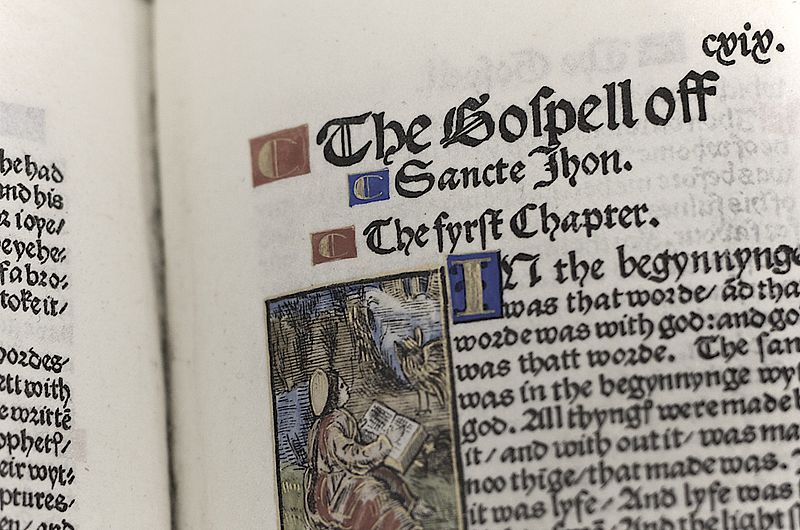Books are supposed to defy materiality. According to conventional wisdom, it matters not what the book is, only what it contains. The abstract ideas conveyed by words and language exist on a higher plane than objects: books are just rectangular items which enable us to access them.
We could be reading Hemingway on a Kindle, or in a second hand paperback, or a beautifully embossed Folio edition; it matters not, they are the same words, the same ideas. Yet to claim that literature is somehow apart from the books they appear in is curiously perverse.
When the first books began to appear during the 2nd century AD—or objects that we would recognise as such, like codices painstakingly copied and illuminated—each edition was a prized treasure. With no mass production, each copy represented untold number of hours of toil and dedication.
As a consequence, only the most important texts were preserved in monastic communities in Europe and the Middle East. The Bible took centre stage in the West in this process of replication, each edition a record of God, almost a holy object in itself.
The reverence accorded to the book itself was diminished with Gutenberg’s invention of the printing press in 1440, but even today, to burn a copy of the Bible is seen as a sacrilegious act, somehow attacking the words themselves even though we are in no danger of ‘losing’ the Bible. So despite claims to the contrary, a residual part of our conscious thinks the physical book significant.
This can be seen in the way people still read printed books instead of Kindles. We assign value to an object which we spend hours, days, even weeks with reading: you will never forget the particular copy of Proust’s A Remembrance of Things Past you finally finished.
Many of these copies are made ‘unique’, by the addition of notes and open-ended thoughts scrawled in the margins. One of the delights of reading a second hand book is coming across someone’s thoughts on the proceedings. Yet just as we jealously preserve our worn and chipped editions of the canonical greats, so too do we invest in expensive slipcase, hardback editions.
When we do, the book moves from the realm of personal items of memory into objects of status—not just of wealth, but of intelligence and learning. When you proudly show your library of rare, hard-to-find books, you are displaying a reflection of your own personality: this is what I am interested in, this is what I spend my wealth on, the subtext always implying a personality of cultivation and interest.
Of course, from the Medieval libraries of kings to the Renaissance collections of the Medici, it was ever thus. The sumptuous binding, engravings, the whole idea of William Morris’ ‘beautiful books’, present books as symbols of status, money, and intellect. That these objects contain literary value is almost a cover, a defence against any accusation of excess—after all, how can you criticise anyone for owning Charles Dickens’ Great Expectations, even if it is the scarce 1863 Confederate printed edition which sells for around £18,000.
The materiality of books is not some incidental aspect, but a feature valued independently of the texts’ themselves. Yet can we reclaim the book away from its status as an object of the wealthy? On one level of course, we cannot. Just as the most radical painters now have their canvases adorning the walls of bankers’ homes and Gulf state galleries, valuable editions of renowned authors’ works will continue to hold an extravagant monetary value, one predicated on scarceness, ironic for a medium which is meant to be based around mass production.
However, parallel to the desires of the rich are the collections of ordinary people, endowing great importance to the seemingly most mundane of things.
I have, for instance, amassed a trove of vintage orange striped Penguin paperbacks, their pages browning, and derive great satisfaction from their rows of matching spines on my bookshelf. If I can purchase a book in Penguin’s classic, Edward Young-designed, colour-coded horizontal bands (orange for serious literature, green for thrillers, blue for non-fiction), then that seems to me infinitely preferable to the blander designs of other publishers.
Even the nineteen-seventies Penguins, with their black spines and use of contemporary paintings for covers have a wonderful simplicity of design. These are books as aesthetic objects to me, the quality of the writing contained within complemented by the beauty of the book which holds the pages.



